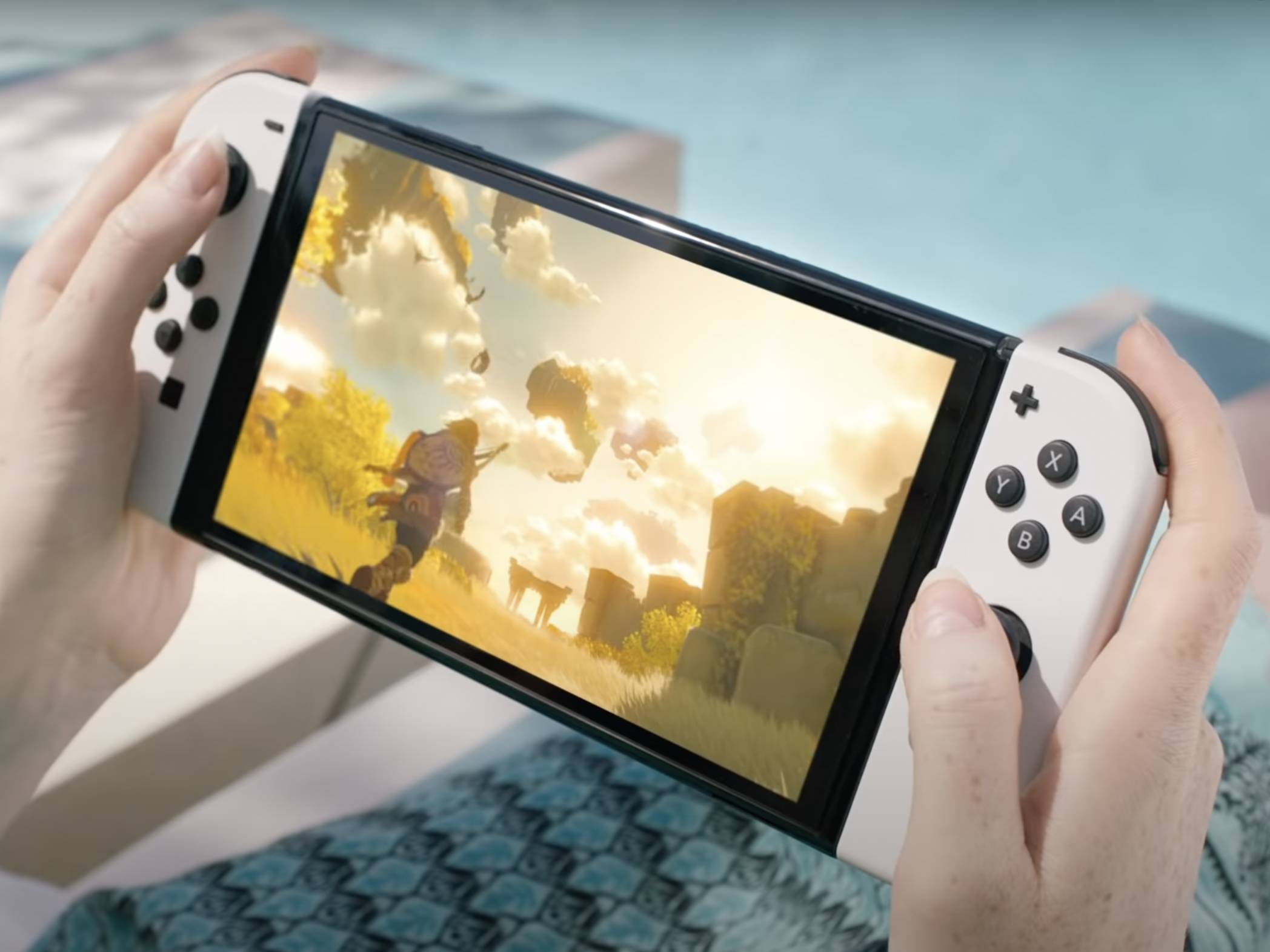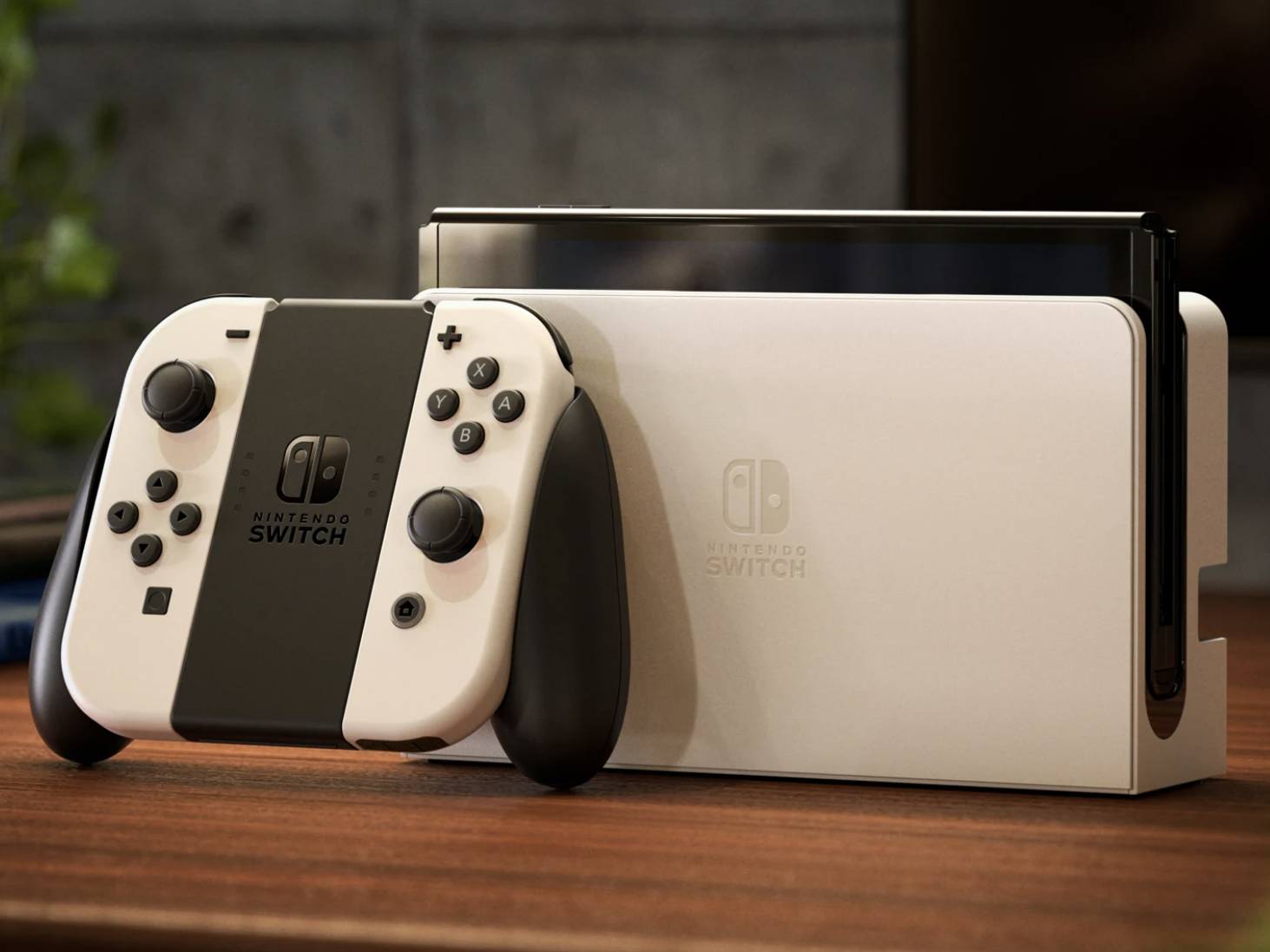Nintendo Switch OLED vs normal Switch: what’s the difference?
It's not the Switch Pro but the OLED-equipped Nintendo Switch is a great buy for handheld obsessives wanting the best Switch experience

After much not exactly baseless speculation and rumours, Nintendo revealed a revised Nintendo Switch last year – the Switch OLED. So here we’re pitching it against the normal Switch – so Nintendo Switch OLED vs Switch: which is better for you?
While there are definitely reasons to be excited about the OLED refresh of Ninty’s hybrid machine – which continues to sell faster than Usain Bolt running to catch a bus – those hoping for a graphical boost that puts it a little bit more in line the PlayStation 5 and Xbox Series X (or even Xbox Series S) are going to be underwhelmed.
The Nintendo Switch OLED model, as the name gives away, does have a much-improved display using OLED tech, as well as a vastly improved kickstand and better speakers, all of which is exciting for handheld players. But does it justify the price bump? And is it worth upgrading from an older Switch?
Design: (screen) Size matters


In terms of pure design, the Nintendo Switch OLED model looks very familiar to the original Switch which has now been discounted a little. You’re still looking at a touchscreen tablet console to which you attach two Joy-Con controllers when you want to play in handheld mode. If you want to play on the TV, the console still slots snugly into the included dock, which connects to your TV via HDMI.
But there are a couple of fairly significant changes. The most obvious one is screen size, which has been increased to 7in, up from 6.2in on the original model and much larger than the more portable Switch Lite’s 5.5in display. If you predominantly play the Switch in handheld mode, having a bigger screen to look at is obviously a tempting upgrade, especially as Nintendo has achieved it by slimming down the bezels, rather than increasing the overall size of the device, which remains pretty much identical to the original. One issue we do have is that the front of the Switch is now glossy rather than matte. It definitely makes it look more premium, but in turn makes the device noticeably more reflective.
The Switch OLED does weigh slightly more, though, up to 320g from the 297g Switch. With the Joy-Cons attached the whole thing weighs in at 420g, and considering that the Switch was pretty heavy in the first place, this is something to consider. If handheld comfort over longer play sessions is your priority, the Switch Lite remains the best choice.
The other notable design tweak is the much-improved kickstand. The flimsy stand on the original always felt worryingly snappable, and Nintendo clearly agreed privately, because the Switch OLED’s is almost as wide as the console itself, making it much sturdier for tabletop play. You can adjust its angle too, allowing you to find the optimal position for where you’re sat.
The Switch OLED ships with a redesigned dock which now has a built-in wired LAN port. Before, the Switch was a Wi-Fi only machine for online play. As well as the standard black model we’re used to, Nintendo has also introduced an off-white colour for the Switch OLED.
Read more › Nintendo Switch OLED review
Display and audio: OLED me at it

If you want to know the main reason why you should consider buying a Nintendo Switch OLED model then, well, the clue’s in the name. As well as increasing the size of the display, Nintendo has replaced the original Switch’s LCD with a 7in OLED panel. If you’ve made the jump from an LCD phone to an OLED-toting one – or perhaps you were the owner of the evidently ahead-of-its-time OLED PlayStation Vita – then you’ll know what a huge difference it can make. Richer, more vivid colours, inkier blacks and improved contrast: there’s a good reason why OLED continues to reign supreme in the world of screen tech.
The Switch OLED’s resolution remains at 1280×720, but despite the undoubtedly disappointing lack of a bump in that department, the move to OLED is still a big upgrade for those who care about visuals. The watercolour painting in motion that is The Legend of Zelda: Breath of the Wild and its upcoming sequel will look absolutely sumptuous on an OLED.
Nintendo says the Switch OLED features ‘enhanced audio’ from the console’s speakers, and they’re definitely noticeably louder and more detailed. If you’d still rather use headphones, Nintendo finally enabled Bluetooth support for all its Nintendo Switch models (including the OLED) last month. Not being able to use your wireless cans with the original Switch was a big letdown and felt outdated back in 2017. And while a number of brands have released Switch headsets with USC-C dongles that enable wireless connectivity, it’s much easier now you can pair any old pair of Sonys or Boses that you might have lying around.
Power: Same as it ever was
What’s the difference? Short answer: nothing. Despite all the talk about a 4K-ready Switch Pro being on the horizon, the Switch OLED will have the same customised Nvidia Tegra X1 as its predecessor. It also has the same 4GB of RAM, and the same max 1920×1080 at 60fps performance when docked. There’s no 4K upscaling of any sort going on here. In handheld mode, meanwhile, 720p remains the best you can expect resolution-wise.
Power-hungry Nintendo gamers were definitely expecting more and, while we can see how it might be tricky for Nintendo to develop games that run well on a 4K top-tier model , it does feel like a missed opportunity.
We guess it would have been difficult without crushing the handheld-only 720p Switch Lite.
Handheld Switch players will likely be chuffed with the OLED upgrade, but if your own Switch is usually docked, there’s simply no reason to upgrade. Games are going to look and perform identically. And we still wouldn’t rule out a 4K Switch in the not-too-distant future.
Battery life and storage: more in the tank

If you think your OG Switch is lacking in the battery department, prepare for more disappointment. The Switch OLED has the same 4.5-9 hours battery life, depending on usage, as its LCD counterpart, and the same 3-hour charging time. However, OLED displays are more energy-efficient. So it’ll feel like you’re getting a bit of additional juice out of the newer console.
Storage, on the other hand, has doubled out of the box. You get 64GB now. Although an SD storage card expansion will probably still be essential at some point down the line, you’ll at least be able to hold out a bit longer.
Price: deeper pockets needed
If you want Mario and Zelda on an OLED, you’re going to have to pay up for the privilege. The Nintendo Switch OLED model costs $350/£310, more than the standard model did – but it has been price-dropped to $299/£260. The latest pricing is above.
The Switch OLED costs a $150 or a little over £100 more than the $199/£199 Switch Lite – latest pricing on the OLED is below:
